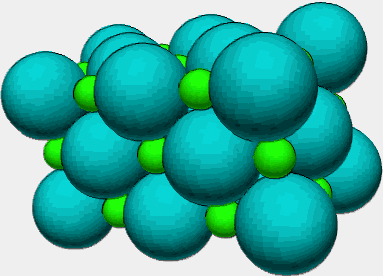How many electrons does a chlorine
atom gain?
Well since chlorine is in group
VIIA, it has seven valence electrons. To have eight
valence electrons it will gain one electron. If a
chlorine atom gains one electron, it would now have
eight valence electrons, but a total of 18 electrons.
A chlorine atom only has 17 protons, so there is one
additional electron. How do we communicate the extra
electron? We write the symbol as Cl-, and
we change its name to chloride.
How many electrons does a oxygen atom
gain?
Oxygene is in group VIA, it has six
valence electrons. To have eight valence electrons it
will gain two electrons. By gaining two electrons, it
now has eight valence electrons, and a total of 10
electrons. An oxygen atom only has 8 protons, so
there are two additional electrons. How do we
communicate these extra electrons? We write the
symbol as O2-, and we change its name to
oxide.
How many electrons does a sodium atom
lose?
Sodium is in group IA, it has one
valence electron. Now you might be concerned becasue
you may be asking how does a sodium atom with one
valence electron lose electrons to get eight valence
electrons?!! Actually it is very easy. If we remove
one electron, the only valence electron it has,
sodium will now have ten electrons! That is the same
number of electrons as neon has! By losing one
electron, sodium now has the same number of valence
electrons as neon. Sodium would never want to lose
two electrons. How do we communicate the loss of
electrons? We write the symbol as Na+, but
we still call it sodium, we just say sodium ion now.
How many electrons does a calcium atom
lose?
Calcium is in group IIA, it has two
valence electron. By losing two electrons, calcium
now has the same number of valence electrons as
argon. How do we communicate the loss of electrons?
We write the symbol as Ca2+, but we still
call it calcium, we just say calcium ion now.
|
